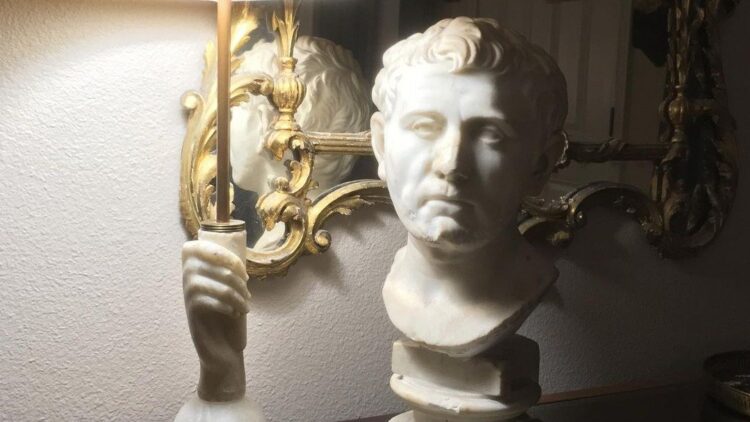Do you have your prized thrift store find? Maybe it’s something designer you can’t believe was donated, or something with little value that just means a lot to you, or something so perfectly suited to your taste you couldn’t believe it was actually real.
What about an ancient artifact? That’s what one woman in Texas stumbled upon during a thrifting session, picking it up for a steal of a price with no clue what was to come.
A Texas art collector made an interesting find a few years ago.

Laura Young was shopping at her local Goodwill looking for items to stock her vintage resell business when she spotted a marble bust. She liked it, so she purchased it for the $35 sale price. This was back in 2018.
Little did she know she had stumbled upon something incredible.

That bust was originally part of a full-scale replica of a Pompeii villa that was constructed in Aschaffenburg, Germany. This model, called Pompejanum, and was built by King Ludwig I of Bavaria during the mid-1800s. It housed many pieces of art that were originally from ancient Rome, including this bust.
This turn-of-the-century photo shows the bust upon a stand in Pompejanum’s left atrium.

However, the villa was badly damaged by bombers during World War II, and the bust is believed to have been brought to the U.S. by an American soldier.
Luckily, Young’s experience with vintage and antique items lead her to believe the bust may have more value than she originally thought.
So she started doing some research.

She met with several auction houses as well as experts from the University of Texas, all confirming that she purchased an ancient artifact.
Because it was considered stolen, Young wasn’t able to be considered the owner, nor was she able to sell it. She’s understanding though, saying in an interview with The Times , “It was extremely bittersweet, to say the least. But I only have control over what I can control, and art theft, looting during a war, is a war crime. I can’t be a party to it.”
She will, however, receive a finder’s fee.
The bust will be on display at the San Antonio Museum of Art until May of 2023, after which it will be returned home to Bavaria. The museum believes the bust could be portraying one of Pompey the Great’s sons, dating around 106-48 BCE.
Young is grateful for the experience, saying, “[…] I’m glad I got to be a small part of (its) long and complicated history, and he looked great in the house while I had him.”
h/t: Global News
















































